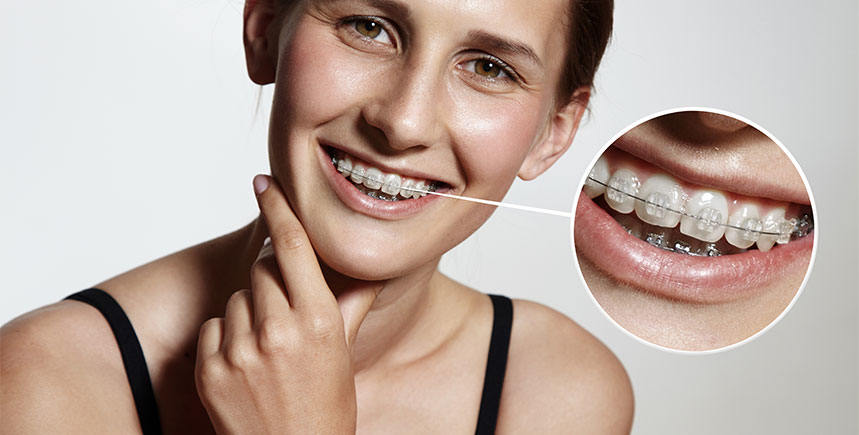The decision to undergo orthodontic treatment and wear braces is a significant one that can have long-lasting effects on dental health and overall well-being. One of the common questions that arise during this decision-making process is whether it is better to wear braces early in life or to wait until later. In this article, we will explore the factors involved in this decision and provide insights into the benefits and considerations of wearing braces at different stages of life.
Early Orthodontic Treatment: The Benefits
Ideal age for braces: Early adolescence, between the ages of 10 and 14, is widely considered the ideal time to get braces.
Early orthodontic treatment, also known as interceptive orthodontics, involves starting orthodontic intervention at a younger age, typically between the ages of 7 and 11. There are several benefits associated with early orthodontic treatment:
Addressing Growth and Development: One of the key advantages of early treatment is the ability to guide the growth and development of the jaw and facial structures. By identifying and addressing orthodontic issues early on, such as bite misalignment or crowding, orthodontists can utilize the natural growth processes to achieve optimal results.
Preventing Future Complications: Early intervention can help prevent potential complications that may arise if orthodontic issues are left untreated. For example, correcting bite problems early can reduce the risk of temporomandibular joint (TMJ) disorders and excessive wear on teeth.
SEE ALSO: What Does Bonding Mean in Orthodontics
Reducing Treatment Complexity: In some cases, early orthodontic treatment can simplify future orthodontic procedures.
By addressing certain issues during childhood, such as crossbites or severe crowding, subsequent orthodontic treatment may be less invasive and shorter in duration.
Boosting Confidence: Correcting orthodontic issues early can improve a child’s self-esteem and confidence. Straighter teeth and a well-aligned smile can positively impact social interactions and overall emotional well-being.
Considerations for Early Orthodontic Treatment
While early orthodontic treatment offers significant benefits, there are also considerations that need to be taken into account:
Treatment Timing: The timing of early orthodontic treatment is crucial. Orthodontists assess each child individually to determine the most appropriate time to begin treatment based on their specific orthodontic needs and growth stage.
Compliance: Early treatment often requires a high level of patient compliance, especially regarding wearing appliances or braces as instructed by the orthodontist. Parents play a key role in ensuring their child follows the recommended treatment plan.
Follow-up Care: Early orthodontic treatment may be followed by a second phase of treatment during adolescence to fine-tune the results and ensure long-term stability. Regular follow-up appointments are essential to monitor progress and make any necessary adjustments.
Late Orthodontic Treatment: The Benefits
On the other hand, late orthodontic treatment, typically during adolescence or adulthood, also offers its own set of benefits:
Fully Developed Dentition: Waiting until the permanent teeth have fully erupted and the jaw has finished growing allows orthodontists to work with a more stable and predictable dentition. This can lead to precise and long-lasting results.
Patient Cooperation: Older patients often exhibit higher levels of cooperation and responsibility regarding orthodontic treatment, which can contribute to successful outcomes.
Comprehensive Treatment: Late orthodontic treatment can address a wide range of orthodontic issues, from simple to complex cases. Orthodontists have a variety of treatment options available for older patients, including traditional braces, clear aligners, and lingual braces.
Improved Aesthetics: Many adults and teenagers seek orthodontic treatment for aesthetic reasons, such as straightening crooked teeth or closing gaps. Late orthodontic treatment can significantly enhance the appearance of the smile.
Considerations for Late Orthodontic Treatment
While late orthodontic treatment offers advantages, there are important considerations to keep in mind:
Treatment Duration: Orthodontic treatment for older patients may take longer compared to early intervention, as the teeth and jawbones are less responsive to movement. Patients should be prepared for a longer treatment duration.
Bone Density: In older individuals, bone density and gum health may affect the feasibility of certain orthodontic procedures. Orthodontists evaluate these factors to determine the most suitable treatment approach.
Periodontal Health: Patients undergoing orthodontic treatment later in life should have good periodontal health to support the movement of teeth and ensure optimal treatment outcomes. Periodontal assessments are essential before initiating orthodontic treatment.
Conclusion: Finding The Right Time for Braces
In conclusion, the decision of whether it is better to wear braces early or late depends on various factors, including the individual’s age, orthodontic needs, growth stage, and overall oral health. Both early and late orthodontic treatment have their advantages and considerations, and the best approach is determined through thorough assessment and consultation with an experienced orthodontist.
Ultimately, the goal of orthodontic treatment is to achieve a healthy, functional bite, and an aesthetically pleasing smile that enhances the patient’s confidence and quality of life. By understanding the benefits and considerations of early and late orthodontic treatment, individuals can make informed decisions about their orthodontic journey.

